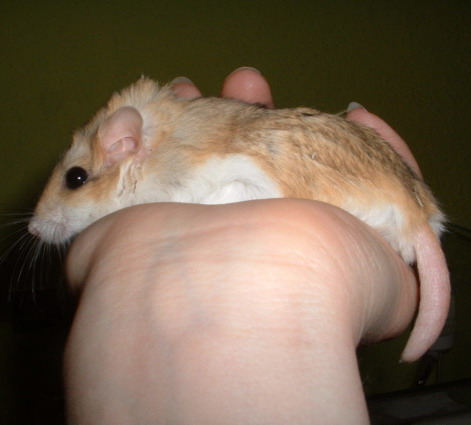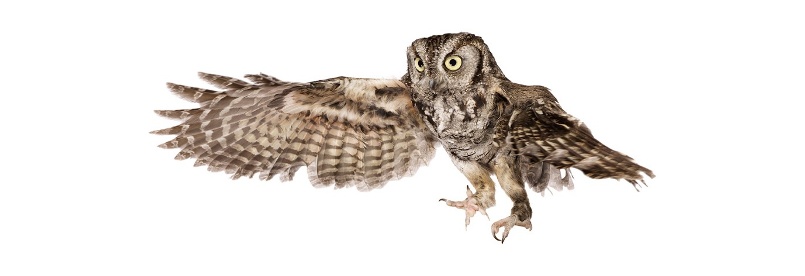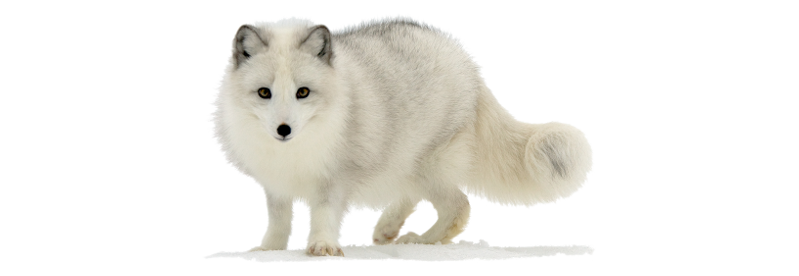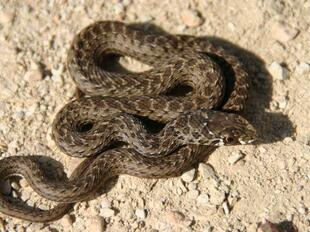
Fat-tailed gerbil, or Duprasi gerbil (Pachyuromys duprasi)
Phylum — chordata
Class — mammalia
Order — rodentia
Family — muridae
Genus – pachyuromys
Appearance
The Fat-tailed gerbil is a medium-sized gerbil. Its body length is about 10 cm, with a tail length of about 5 cm. This gerbil has a thick, soft, fluffy coat. The hair at the back and the head is yellow-colored, with a dark grey basis and a small black tip. The belly is clear white. Fat-tailed gerbils weigh about 40 grams. Their body is round and somewhat flattened. They have no clear neck and a very sharp face, with large oval-shaped black eyes. The ears of this species are low positioned, which gives this species a fox-like head. The legs are comparatively short for a gerbil. They look similar to a hamster, but unlike a hamster they have a pointed snout and a fat, almost bald, club-shaped tail from which they gets their common name of 'Fat-tailed gerbil'. The Fat-tailed gerbil stores fat in its tail, in the same way that the camel stores fat in its hump. Therefore, a healthy Fat-tailed gerbil should have a nicely rounded tail.
Habitat
The natural distribution of Fat-tailed gerbils is the northern portion of desert west of the Nile Delta in Egypt. This rodent also extends into Libya, Tunisia, and Algeria.
Behavior
Fat-tailed gerbils are the most docile of Egyptian rodents. When captured, these animals give little effort to escape and rarely bite. However, with other members of their species, they can be aggressive and sometimes cannibalistic. Females have been known to eat their young. In captivity, owners have noted that when they fight, they bite each other's tails, often forming scars. Fat-tailed gerbils are nocturnal. In the wild, they most often become active at dusk, although individuals are active intermittently all day and night. Owners of captive animals claim they are active for very short periods time in between longer periods of sleep. They appear to be social and are found in colonies, but can be solitary as well.
Diet
Fat-tailed gerbils are mostly insectivorous. In the wild, researchers have also observed these animals feeding on plants of Anabasis articulata and Artemisia monosperma.
Reproduction
The mating system of wild Fat-tailed gerbils was not found in the literature.
In captivity, the mating ritual of Fat-tailed gerbils is particularly unusual. Apparently, males and females stand on their hind legs and wrestle while making shrieking noises. This mating ritual is often mistaken for fighting.
The gestation period for Duprasi gerbil is between 19 to 22 days. In captivity litters between 3 and 9 young were born during the months of April through November. Pups are weaned at around 3 to 4 weeks of age. At birth, young are blind, naked, and vulnerable. Mothers care for their offspring, in some type of nest, probably in a burrow, until they are able to fend for themselves. Fat-tailed gerbil pups are weaned at around 3 to 4 weeks of age. The role of the male in parental care has not been noted.
In captivity
Captive specimens of the Fat-tailed gerbil have a life span between 5 and 7 years.
The best way to keep Fat-tailed gerbils is in a tank (aquarium or terrarium). It should measure at least 100 by 50 centimeters (39 by 20 in) for one or two gerbils. Fat-tailed gerbils are fond of digging, so it is important to provide them with a thick layer of bedding. Wood shavings can be used, but not pine or red cedar wood shavings; many rodents can react allergically to them, and may develop respiratory problems. Aspen wood shavings are considered to be the best. They also need to take a sand bath regularly to prevent their fur from becoming greasy. Fat-tailed gerbils will make a nest; this may be underground in their burrow, on the surface in the bedding, or in a nesting box. Fat-tailed gerbils can be kept occupied by giving them gerbil toys, for example an exercise wheel. Keeping a breeding pair can be somewhat difficult. It is possible to keep Fat-tailed gerbils singly, like Syrian hamster.
In captivity, these rodents are fed meal worms, crickets, beetles, grain, various vegetables, Gerbil Mix, and even chopped meat.
 Russian
Russian
 English
English
























